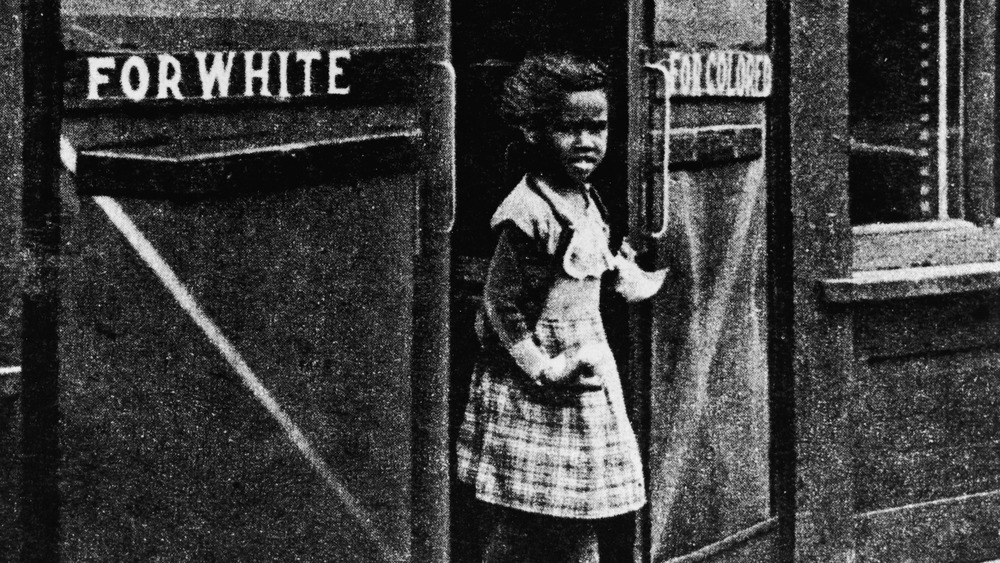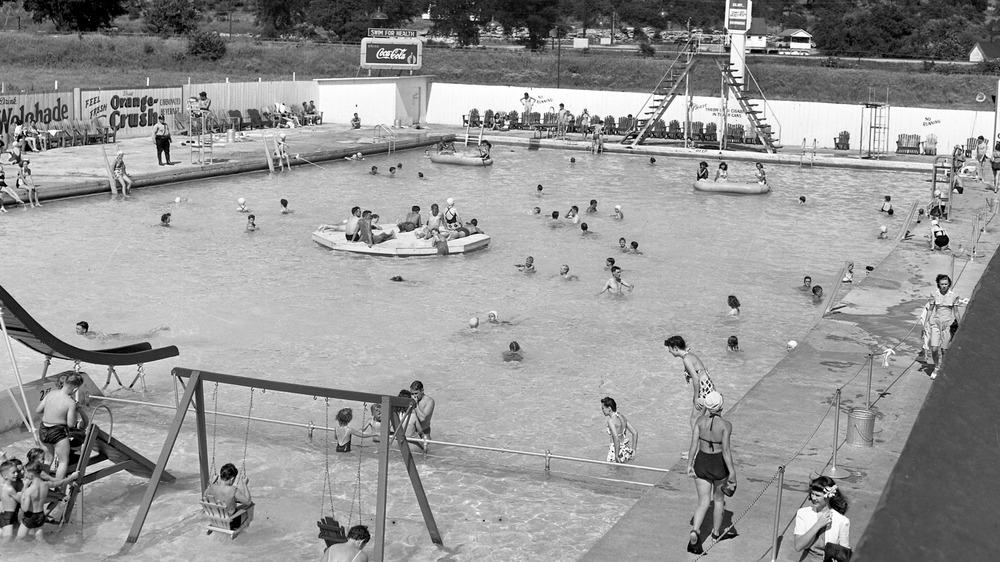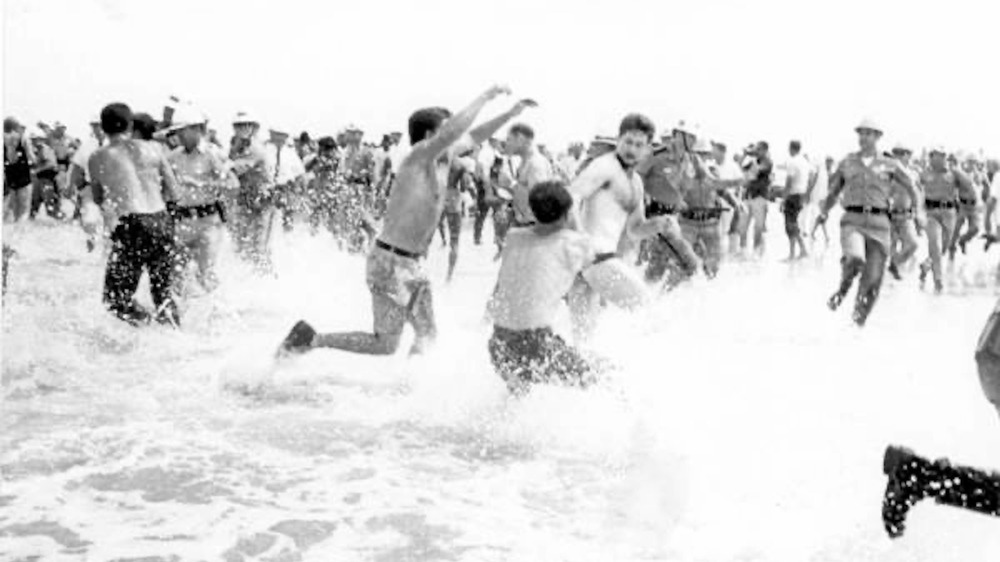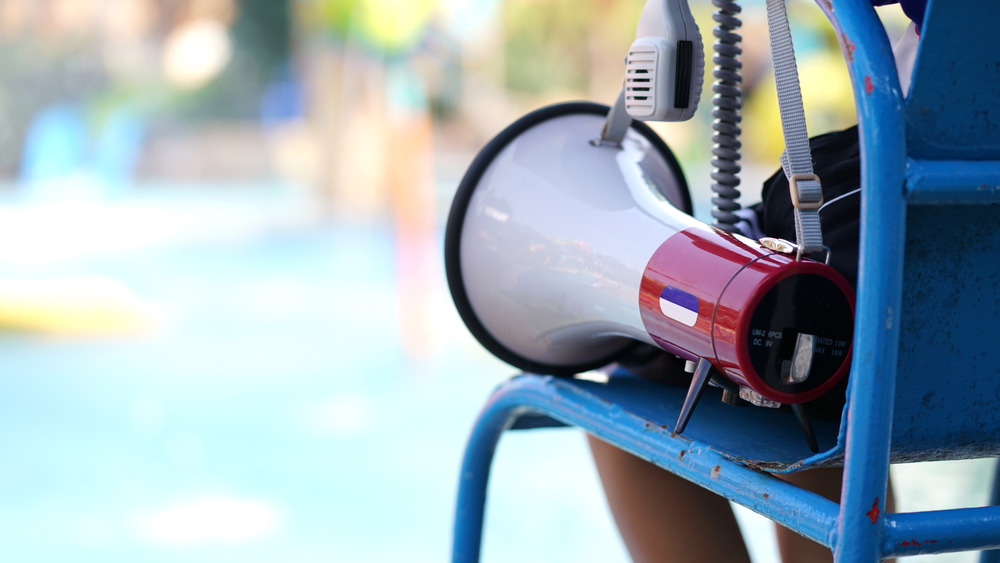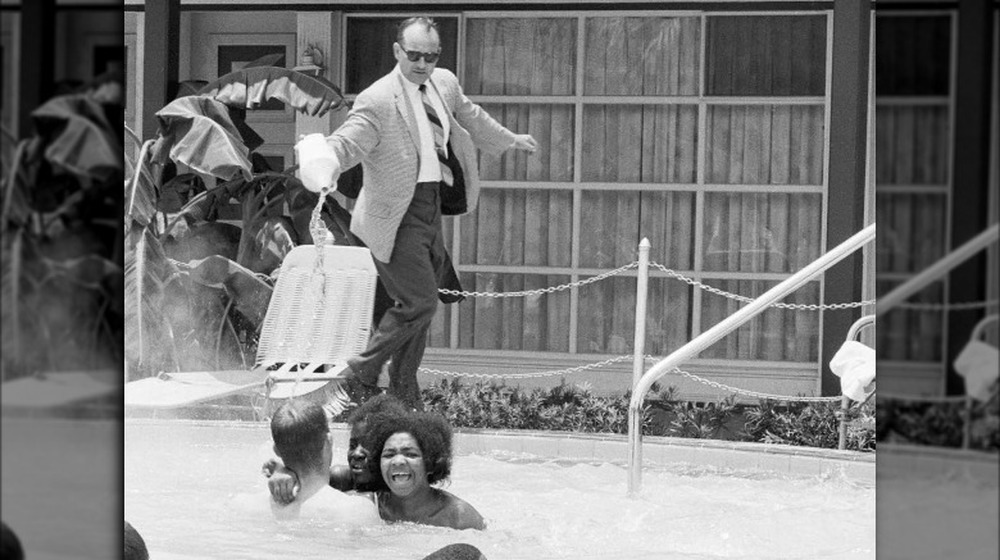What Happened When Washington D.C. Desegregated Public Pools In 1949
Throughout much of the 20th century, whenever Black Americans tried to go swimming in integrated public pools, white people violently targeted them. In response, city leaders across the country justified racial segregation because of this violence. In 1960, the chairman of the Charlotte Park and Recreation Commission in Charlotte, North Carolina came to the conclusion that "Public order is more important that rights of Negroes to use public facilities," per The Conversation.
In response to de-segregated swimming pools, white residents often responded violently, whether by throwing nails to the bottom of the pool or by physically assaulting Black swimmers. During one protest, the motel manager even poured undiluted acid into the pool.
Before the Civil Rights Movement of the 1960s, there were repeated attempts to integrate public pools. But unfortunately, these attempts rarely led to accessible and well-funded facilities for Black communities. Some people just ended up swimming in nearby rivers instead, according to Anacostia River Pool. Here's what happened when Washington D.C. desegregated public pools in 1949.
Attempts to integrate places of leisure
Although the 20th century saw a rise in municipal public pools, only a fraction of the thousands of new public pools across the country allowed Black people to swim. According to The Conversation, beaches and swimming pools ended up becoming one of the "most segregated and fought over public spaces in the North and the South."
NPR reports that there was also a concerted effort among cities to build pools in "poor, immigrant, working-class-white neighborhoods" and they actively avoided building pools in neighborhoods that had a predominantly Black population.
And although some cities didn't pass official policies of racial segregation, segregation was enforced through public violence. When Highland Park pool opened in Pittsburgh, Pennsylvania in 1931, when Black boys tried to get in the pool, "they were oftentimes beat and dunked and punched" if they even made it into the water. Eventually, white people set up "sentinel guard at the entrance to the pool," and if Black people tried to access the pool, they were badly beaten, "sometimes with clubs."
White people in the United States justified segregating pools with the racist belief that Black people "were dirtier than whites" and they wanted "white swimmers to avoid being infected." And since gender integration in pools was occurring at roughly the same time, Dr. Jeff Wiltse claims that there were also racist and patriarchal concerns of keeping white women separated from Black men.
The government desegregates federal pools
On May 20, 1949, Assistant Secretary of the Interior C. Girard Davidson issued a regulation which stated that public facilities, including swimming pools, in Washington D.C. would from that moment on "be operated on a non-segregated basis."
In Links to the Past, Patricia Kuhn Babin writes that the Department of the Interior had apparently given the instruction to eliminate segregation at these pools at least a year earlier. No incidents had been reported at the pools as a result of integration, although Babin quotes the Evening Star, which contemptuously suggests that this may be because Black people have "shown dignified forbearance in not attempting to exploit conspicuously every newly won privilege."
More likely it was a result of white flight, which was a frequent response to pool integration, according to according to NPR. Whenever a court ordered that a pool had to be open "to black and whites without discrimination," a majority of the white people who were using the pools simply left and stopped using the public pools. Instead, they built back-yard pools and private pool clubs, where they could "continue to legally discriminate against Black Americans."
What happened at Anacostia Pool
One month after issuing the regulation, the pools were formally desegregated in June, 1949. But according to Rediscovering Black History, almost immediately, white patrons and residents started harassing Black residents who tried to use the pool. According to Race, Riots, and Roller Coasters by Victoria W. Wolcott, although some lifeguards let some Black swimmers in, they soon asked to be relieved because "they feared they might not be able to handle disturbances."
It only took two days for this "disturbance" to occur. In one of the incidents, two Black boys were swimming in the pool when a group of white boys surrounded them and started taunting and splashing the swimmers. At least 700 white onlookers did nothing. In another incident, six Black boys were in the water for barely five minutes before 50 white boys "booed and splashed them out," according to The Washington Post. After one of the incidents, though accounts vary which, there was a violent clash in the evening, with some people "using homemade clubs, some with nails sticking out."
In response, the Department of the Interior closed Anacostia pool for the rest of the summer. When the pool finally reopened, "many white people stopped using the pools as frequently and the quality of facilities declined," Anacostia River Pool reports. And Anacostia Pool wasn't the only one. Dennis Chestnut remembers getting assaulted with bottles and rocks by white boys when he tried to swim at a pool in Fairlawn.
The eventual integration of public pools
Black Americans continued protesting racial segregation, and Rare Historical Photos writes that one of the most famous swim-in protests took place at the former Monson Motor Lodge swimming pool on June 18, 1964. In a protest organized by Dr. Martin Luther King Jr., a group of Black and white activists went into the whites-only pool. According to Face2Face Africa, the white activists had paid for rooms at the motel, so when the motel manager, Jimmy Brock, demanded that they exit the pool, the activists claimed they were within their rights to entertain guests.
According to a 2014 report by NPR, Al Ling and J.T. Johnson, two of the protesters in the pool, said that at this point Brock lost it, and started pouring muriatic acid, "an undiluted hydrochloric acid used to clean pools," into the pool, hoping to scare the swimmers into getting out. The swimmers refused, knowing that there was enough pool water so that the ratio of acid wasn't a threat, and eventually a police officer had to jump into the pool and arrest the activists. The brutality of Brock and the officer was captured on camera, and many believe these images helped pass the Civil Rights Act of 1964.
Although the Civil Rights Act mandated desegregated public accommodations, however, different municipalities tried various things to maintain racial segregation. According to The Conversation, some pools were simply filled in, while others became membership clubs and started charging fees. Many cities also saw their recreational facilities defunded.
